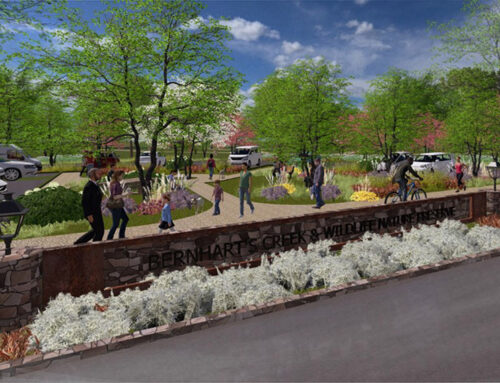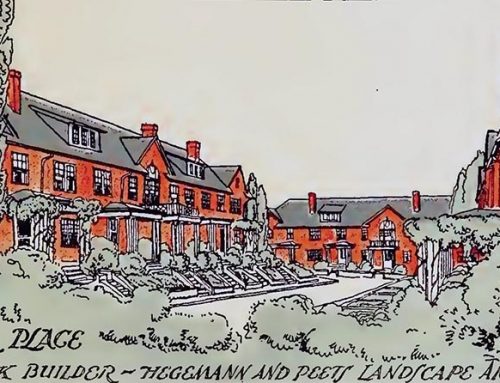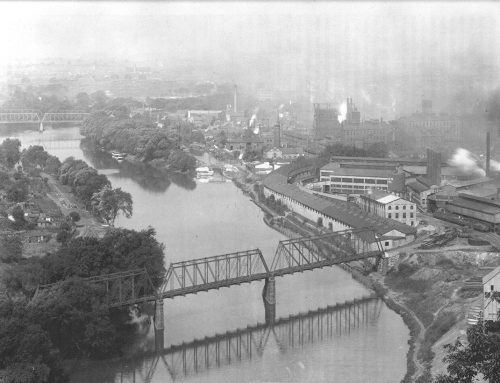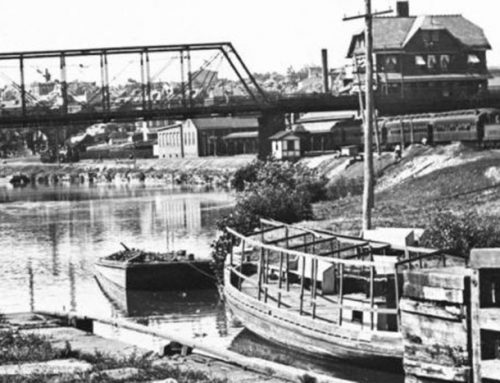Many years ago the glen stretching between present day Egelman’s Park and Pendora Park was given the name Rosenthal or Rose Valley. The glen is formed by the depression of neighboring mountains.
Rose Valley is situated in Lower Alsace Township, named after the province from which the first settlers had emigrated, who had come from a French province called Alsace, on the west bank of the upper Rhine adjacent to Germany and Switzerland.
In 1815 two Reading businessmen, Charles Kessler and John Spade, erected a substantial stone factory at the lower approach to the glen. Kessler and Spade had built their pioneer textile mill in an effort to encourage local production of cotton goods. After three years of operation the place closed down. The stone structure was modified and converted to a hotel.
Around this time a spring was discovered upon the property commonly referred to as Kessler’s Spring. The stone structure was eventually named the Mineral Spring Hotel.
The original spring rose from under a rock which dipped south, with its outcropping running east and west. From thence it flowed through an iron pipe to a hexagon enclosure, (near the hotel) in the center of which was a small square of brick work, capped with an iron plate, forming a hole of 3 feet by 2 feet, into which water gently dropped from a diminutive figure of a lion’s head. The origin of the original spring was never sought after and over time other springs outcropping on the eastern slope of Mount Penn in Rose Valley mixed with it. These springs were piped and water was obtained by holding a glass under the flowing stream issuing from the end of the pipe.
From 1827 to 1837 Mrs. Catherine Kessler and her two daughters managed the hotel. The Mineral Spring Hotel was converted into a “fashionable hotel” in 1837, and ran until 1856, when the Reading Water Company purchased the property. From 1937 to 2017 the former Mineral Spring Hotel was rented to the East End Athletic Club.
Rose Valley was a delightful spot for a summer resort of the inhabitants of Reading. In 1875 the Penn Street Passenger Railway was extended from Perkiomen Avenue to the Mineral Springs. A ten feet wide walkway from the grove opposite Aulenbach’s Cemetery extended through the woods along Rose Valley to the Mineral Springs. The walk was one of the coolest and most romantic in this vicinity. It led along a well shaded hillside, the trees being principally chestnut of about twenty-five years’ growth, standing close together, and furnishing ample protection from the rays of the sun. At the foot of the sloping hill was the main Mineral Spring dam, from which a portion of the city water supply was taken.
Below: Rose Valley Creek in Mineral Spring Park, 1890.

Below: Mineral Spring Hotel, 1890.

Below: Mineral Spring Park and Hotel.

The mineral spring, with an estimated daily minimum flow of 120,000 gallons, was once one of the main sources of Reading water. However, the city has not used the area as a water source since about 1880. The mineral spring no longer flows, and has been abandoned.
On April 15, 1867, by the Act of Legislature, the Eastern limits of the city were extended about half a mile. A survey of the extension was laid off in May, 1863, by the City Engineer, Mr. Samuel M. Rea, for Messrs. Haak, Bickley & Boyer, who purchased about forty-five acres of the farm of Michael Haak, and had it parceled off in lots. The tract of land was bounded between the Perkiomen turnpike and the Neversink Mountain, the streets passing through it east and west being Cotton Street, and Fairview Street, and the streets bounding it north and south being Sixteenth and Nineteenth. The name of the Perkiomen turnpike within the city limits was changed by an Ordinance of Councils to “Perkiomen Avenue.” The tract of Haak, Bickley & Boyer, was laid off into 628 building lots, having fronts of 20 and 30 feet, and a depth of 210 feet. By 1869 about half the number were already disposed of, at prices varying from $50 to $125, and upon some of them the erection of houses begun.
The great natural obstacle to the eastern expansion of the city was the deep ravine which needed to be filled up to bring the site to a building level and the Rose Valley Creek which flowed through East Reading from Egelman’s lake to the Schuylkill River. In earlier times, spring-fed streams, originating in the higher elevations surrounding the town, were permitted to run on grade level and puddle here and there before flowing into the river. To deal with this situation, foot bridges and culverts were created for public convenience. By the 1870s, Council began paying to divert running water to back-alley gutters lined with stone or brick. Open channels and the like were impeding vehicular passage and development of the town on a grid pattern.
In stages, an underground storm-sewer system was created that carries Rose Valley Creek. Rose Valley Creek is confined by a stone bed and walls laid by stone masons in Mineral Spring Park, which eventually empties into a storm sewer at 18th and Forest streets. In earlier times the waters of Rose Valley Creek were dammed at several places for commercial and industrial purposes.
Below: Present-day map of Reading showing original path of Rose Valley Creek from Egelman’s Lake to the Schuylkill River.

Rose Valley Creek flows constantly beneath the streets of Reading and empties into the Schuylkill River through an 8 foot diameter discharge pipe at the east end of Heritage Park.
Below: Rose Valley Creek flowing into the Schuylkill River.

Mineral Spring Road leads eastward from Reading and passes over the Lindbergh Viaduct into the town of Mt. Penn. The name of this road came from the nearly forgotten Mineral Spring Park, located just north of the Viaduct in Rose Valley. Mineral Spring Road, which originally dipped down into Rose Valley, was reconfigured to lead directly onto the newly completed Lindbergh Viaduct that overpassed the park completely.






Mineral Springs Park was wonderful and magical place.